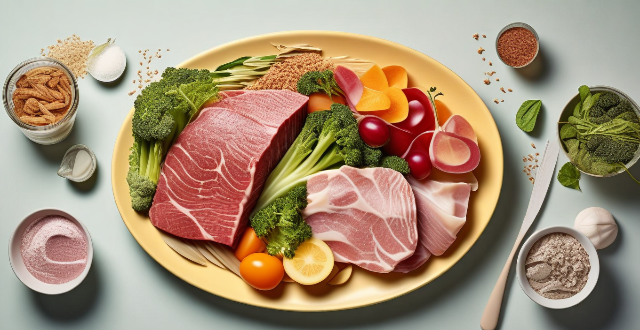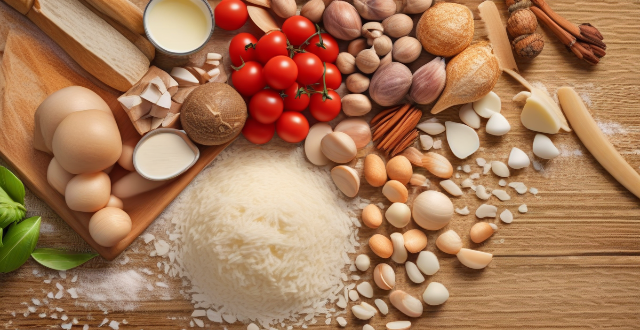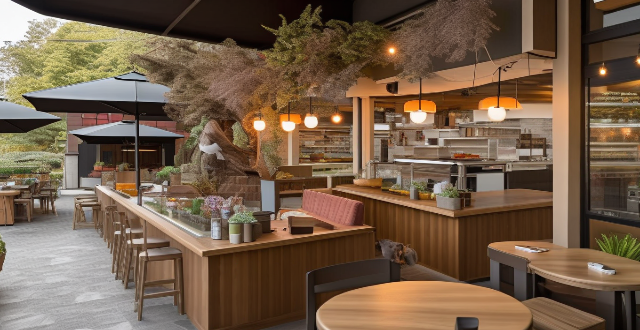Japanese Taste

Can you explain the concept of umami in Japanese cooking ?
Umami is one of the five basic tastes, along with sweet, sour, salty, and bitter. It is often described as a savory or meaty taste, and is commonly found in foods such as mushrooms, soy sauce, and aged cheeses. In Japanese cooking, umami is considered an essential flavor profile that adds depth and complexity to dishes. The science of umami is caused by the presence of glutamate, a type of amino acid, in food. When we eat foods that contain glutamate, it stimulates our taste buds and sends signals to our brain that register as a distinct taste. This taste is often associated with protein-rich foods like meat, fish, and vegetables. In Japanese cuisine, umami is used to enhance the flavors of dishes and create a more complex taste profile. Some common ingredients that are high in umami include miso (fermented soybean paste), dashi (Japanese broth made from dried fish and seaweed), soy sauce, dried shiitake mushrooms, and kombu (a type of seaweed). Umami is used in a variety of ways in Japanese cooking. For example, miso soup is made by mixing miso paste with dashi broth to create a savory soup that is often served as part of a traditional Japanese breakfast. Sushi combines vinegared rice, fresh fish, and soy sauce to create a perfect balance of flavors that includes umami. Ramen noodles use a broth made with chicken or pork bones, which are rich in umami. Teppanyaki involves grilling meat and vegetables on a hot plate, which helps to release their natural umami flavors. In conclusion, umami is an important flavor profile in Japanese cooking that adds depth and complexity to dishes. By using ingredients that are high in glutamate, chefs can create dishes that are both delicious and satisfying.

What are some healthy options for Japanese breakfast ?
Japanese breakfast offers a variety of healthy options that provide essential nutrients and flavors. Miso soup is rich in protein and probiotics, aiding digestion and immunity. Tamagoyaki offers high-quality protein in a low-calorie package. Natto is fermented soybeans with vitamins, minerals, and probiotics for gut health. Onigiri are portable rice balls filled with various ingredients for carbohydrates and protein. Grilled fish provides omega-3 fatty acids for heart and brain health. Japanese pickles are low-calorie, fiber-rich vegetables aiding digestion. Yudofu is boiled tofu high in protein and calcium, suitable for vegans or those watching their weight. Okara, the soy milk residue, is high in fiber and protein, promoting fullness and digestive health. Incorporating these dishes into your breakfast routine can offer a balanced and nutritious start to the day while enjoying Japanese flavors.

What kind of ingredients are commonly used in Japanese cuisine ?
Japanese cuisine is known for its unique flavors, fresh ingredients, and beautiful presentation. The most commonly used ingredients in Japanese cooking include white rice, brown rice, sweet rice, tuna, salmon, squid, shellfish, chicken, beef, pork, cabbage, eggplant, green onions, mushrooms, soy sauce, miso, udon noodles, soba noodles, ramen noodles, rice vinegar, sesame oil, nori, wasabi, and pickled ginger. These ingredients combine to create the diverse and delicious flavors that make Japanese cuisine so beloved around the world.

How do I make a Japanese-style bento box ?
Bento boxes are a traditional Japanese meal that is packed in a box and typically consists of rice, fish or meat, and vegetables. Here's how you can make your own Japanese-style bento box: Ingredients: - 1 cup of cooked white rice - 1/2 pound of thinly sliced beef or chicken - 1 tablespoon of soy sauce - 1 tablespoon of sugar - 1 tablespoon of mirin (Japanese sweet cooking wine) - 1 teaspoon of sesame oil - 1/4 cup of sliced carrots - 1/4 cup of sliced bell peppers - 1/4 cup of sliced cucumbers - 1/4 cup of sliced cherry tomatoes - 1 sheet of nori (dried seaweed) - Salt and pepper to taste Instructions: 1. Marinate the Meat: In a bowl, mix together the soy sauce, sugar, mirin, and sesame oil. Add the sliced beef or chicken and let it marinate for at least 30 minutes. 2. Cook the Rice: Cook the rice according to package instructions until it is soft and fluffy. Set aside to cool slightly. 3. Prepare the Vegetables: Slice the carrots, bell peppers, cucumbers, and cherry tomatoes into thin strips. Season them with salt and pepper. 4. Cook the Meat: Heat a pan over medium heat and cook the marinated meat until it is browned and cooked through. Set aside to cool. 5. Assemble the Bento Box: Take a bento box and fill one compartment with the cooked rice. Arrange the cooked meat and vegetables in separate compartments or on top of the rice. Cut the nori into small pieces and sprinkle them over the rice and vegetables. 6. Enjoy Your Bento Box: Your Japanese-style bento box is now ready to be enjoyed! Eat it as a delicious and healthy meal or pack it for a picnic or lunch on-the-go.

What is the difference between ramen and udon noodles ?
Ramen and udon are two popular Japanese noodle dishes with unique flavors, textures, and cultural significance. Ramen is made from wheat flour, water, salt, and kansui, resulting in elastic and chewy noodles. It is typically served in a meat-based broth flavored with soy sauce, miso, or seafood, and topped with pork, menma, scallions, nori, and a soft-boiled egg. Udon, on the other hand, is made primarily from wheat flour and water, producing thicker and smoother noodles. Its broth is usually clear and light, made from kombu and shiitake mushrooms, and often served hot or cold with simple toppings like tempura, green onions, or grated ginger. Ramen originated in China but became popular in Japan during the early 20th century, evolving into a staple of Japanese cuisine. It has numerous regional variations across Japan, such as Sapporo's miso ramen, Hakata's tonkotsu ramen, and Tokyo's soy sauce-based ramen. Ramen shops can be found everywhere in Japan, from high-end establishments to quick street food stalls, reflecting its deep integration into daily life. Udon has been part of Japanese cuisine for centuries and is traditionally associated with Sanuki (now Kagawa Prefecture), known as the "Udon Kingdom." While udon is typically served in a simple broth or chilled with a dipping sauce, there are also hot pot variations like nabe and kitsune (fox) udon. Udon is often considered comfort food in Japan and is frequently consumed during cold weather or as a quick meal due to its ease of preparation. In conclusion, ramen and udon offer distinct experiences for those who enjoy them. Ramen provides a hearty and filling meal with complex broths and diverse toppings, while udon offers a cleaner taste with simpler broths and toppings, focusing on the pure enjoyment of the noodle itself. Both have their place in Japanese cuisine and continue to captivate noodle enthusiasts around the world.

What are some popular Japanese dishes ?
Japanese cuisine is known for its exquisite flavors, meticulous preparation, and beautiful presentation. Some popular dishes include sushi, ramen, tempura, udon, and okonomiyaki. Sushi comes in various forms such as nigiri, sashimi, and maki. Ramen is a noodle soup with different broths and toppings. Tempura is a fried dish with a light batter. Udon is thick noodles served hot or cold with various toppings. Okonomiyaki is a savory pancake with diverse ingredients. Each region in Japan has its own specialties and unique flavors to explore.

Can you recommend a good Japanese restaurant in my area ?
The text provides recommendations for finding a good Japanese restaurant in one's area. It suggests checking online reviews, asking locals for recommendations, looking for specialties, and considering the ambiance. The steps to follow include searching online, making a list of potential restaurants, narrowing down options, calling ahead, and trying them out. The author encourages readers to enjoy their culinary adventure and discover personal favorites.

How do I use chopsticks properly when eating Japanese food ?
Using chopsticks is an art form in Japan, and there are certain etiquette rules that you should follow to show respect for the culture. Here's a step-by-step guide on how to use chopsticks properly when eating Japanese food: 1. Holding the Chopsticks: Hold the first chopstick (the one closer to the tip of the food) like a pencil, resting it between your thumb and index finger. This is your stationary chopstick. Place the second chopstick (the one closer to the end of the food) underneath the first chopstick, resting on your ring finger. This is your moving chopstick. 2. Picking Up Food: Use the tips of the chopsticks to scoop up food rather than pincing it with the ends. This is considered more polite and traditional. For larger pieces of food, it's acceptable to use both chopsticks to pick them up. For smaller items, try using just one chopstick if possible. 3. Eating: If you need to dip your food in soy sauce or another sauce, do so lightly and minimally. Overdoing it can be seen as wasteful. Place the food in your mouth from the chopsticks without making any noise. Chew with your mouth closed. 4. Chopstick Etiquette: Avoid playing with your chopsticks, tapping them on the table, or leaving them standing in your food. These actions are considered impolite. Never use your chopsticks to point at people or gesture with them. This is rude and associated with funeral rites in Japan. Do not lay your chopsticks across your plate or bowl as this resembles incense sticks at a funeral. Instead, rest them on the chopstick rest provided or on the edge of your dish. 5. After Eating: It's common to wipe the ends of the chopsticks before and after use with the small towel or oshibori provided. If you're at a restaurant, leave the chopsticks as they are when you finish eating. Do not put them back in their original packaging or wrap them up. By following these guidelines, you'll not only avoid offending anyone but also show that you respect and appreciate Japanese dining culture. Remember, practice makes perfect!

How do organic foods affect taste and nutrition ?
Organic foods have become increasingly popular due to concerns about health, environment, and sustainability. The article discusses the impact of organic farming on the taste and nutrition of food. It suggests that organic foods may have a richer flavor profile due to slower growth rates and no artificial flavorings. However, studies have shown mixed results regarding the nutrient content of organic versus non-organic foods. While some studies suggest higher levels of certain nutrients in organic produce, others find no significant difference. Additionally, organic farming practices aim to reduce pollution, conserve water, and promote biodiversity, contributing to a healthier planet. Ultimately, personal preference, budget, and individual health goals will play a role in deciding whether to opt for organic options.

Can you suggest any budget-friendly dinner recipes that don't compromise on taste ?
Budget-friendly dinner recipes include spaghetti aglio e olio, vegetable stir fry, chickpea curry, and lentil soup. These dishes are easy to make with simple ingredients and won't break the bank.

How do professional bartenders measure ingredients for consistency ?
Professional bartenders use a variety of tools and techniques to measure ingredients consistently. Accuracy is crucial for maintaining the same flavor profile and balancing different tastes in cocktails. Efficiency is also important, as it speeds up drink-making and allows bartenders to focus on customer interaction. Jiggers are commonly used tools for measuring both large and small quantities of liquids. Measuring spoons are used for smaller amounts like bitters or syrup. Digital scales are used for precise measurements by weight, especially for ingredients like fruit juices or syrups. Pour spouts and containers help control the flow of liquids to reduce spillage and waste. Standardization processes such as recipe cards, batching, and taste testing are also essential. Recipe cards include detailed measurements for each ingredient, helping new bartenders learn quickly and maintain consistency. Batching involves pre-mixing a large volume of a single cocktail ingredient or an entire recipe, saving time during busy shifts and ensuring uniformity. Taste tests are crucial even with precise measurements, as bartenders adjust recipes based on customer feedback and ingredient freshness. In conclusion, professional bartenders rely on a combination of tools, techniques, and standardized processes to measure ingredients consistently. This ensures that they can replicate the perfect cocktail every time, providing a high-quality experience for their customers.

How do you describe the taste of authentic Mexican cuisine ?
Mexican cuisine is a vibrant and complex blend of flavors that can be both bold and subtle. Here are some key characteristics that describe the taste of authentic Mexican food: ### Spicy Heat Chili peppers and spices like cumin, oregano, and cinnamon add depth of flavor to many dishes. ### Acidity and Tanginess Lime juice and tomatoes provide refreshing acidity and tanginess, while also contributing sweetness. ### Earthy and Nutty Flavors Beans, corn, and nuts offer earthy undertones and richness to Mexican cooking. ### Sweetness and Fruitiness Fruits such as pineapple and mango, as well as vegetables like sweet potatoes, bring a touch of sweetness to savory dishes. ### Umami Richness Cheese and slow-cooked meats contribute deep, savory flavors to Mexican cuisine. ### Herbaceous Notes Cilantro and epazote provide distinctive, fresh flavors that are essential in traditional cooking. ### Texture Variety Crunchy vegetables and creamy avocado-based sauces offer a range of textures that balance spicier elements. ### Bold and Aromatic Garnishes Onions and cilantro are often used as garnishes, adding sharpness and freshness to dishes. Overall, authentic Mexican cuisine is a harmonious combination of spicy, tangy, sweet, umami, herbaceous, and textural elements that create a complex and satisfying gustatory experience.

What are the most popular food tours in major cities ?
Food tours have become a popular way for travelers to explore the culinary delights of major cities around the world, offering an immersive experience that allows visitors to taste local specialties and learn about the history and culture behind each dish. The most popular food tours in major cities include Chinatown, Little Italy, and Greenwich Village in New York City; Montmartre, Marais District, and Saint-Germain-des-Prés in Paris; Tsukiji Fish Market, Shinjuku, and Asakusa in Tokyo; Trastevere, Testaccio, and Campo de' Fiori in Rome; Singapore Heritage, Night Safari, and Orchard Road in Singapore; La Boqueria Market, Gràcia District, and El Born District in Barcelona. These food tours offer a delicious way to explore the cultural diversity and culinary traditions of major cities around the world.

What are some dinner recipes that are gluten-free and still taste great ?
Gluten-free diets have become increasingly popular in recent years, not just for those with celiac disease or gluten sensitivities but also for those looking to try a new way of eating. Luckily, there are plenty of delicious dinner recipes that are gluten-free and still taste great. Here are some of our favorites: 1. Grilled Chicken with Roasted Vegetables 2. Quinoa Stuffed Bell Peppers 3. Gluten-Free Pizza

How does the use of chilies contribute to the distinctive taste of Mexican food ?
Chilies play a pivotal role in Mexican cuisine, contributing heat, flavor complexity, color, and cultural significance. They offer varying intensities of spiciness, from mild to very hot, and their fruity or earthy flavors complement other ingredients. Visually appealing with vibrant colors, chilies also have nutritional benefits like antioxidants and metabolism boost. They are versatile in cooking, used fresh, dried, or smoked, and pair well with acidic and herbal ingredients. Chilies are integral to traditional dishes like enchiladas and mole sauce, showcasing their essential role in defining the unique taste profile of Mexican food.

What are some must-try local experience activities in Tokyo ?
Tokyo offers a variety of local experience activities that cater to different interests, including sushi making classes, tea ceremonies, ninja training, kimono experiences, sake tasting, Sumida River cruises, traditional craft workshops, ramen museum and cooking class, robot restaurant show, Harajuku street fashion tour, baseball game at Tokyo Dome, Tsukiji Fish Market tour, Asakusa Temple and traditional shopping street, Kabuki theatre performance, and Odaiba Beach and DiverCity Tokyo Plaza. These activities provide an authentic Tokyo experience and allow visitors to fully appreciate the diverse facets of Tokyo's vibrant lifestyle.

What are the top food festivals around the world ?
Food festivals are a celebration of culinary delights, bringing together food enthusiasts from all walks of life. Here is a list of some of the top food festivals around the world: 1. Tokyo Ramen Festival (Japan) 2. Sziget Festival (Hungary) 3. Salon du Chocolat (France) 4. Taste of Sydney (Australia)

How do I make sushi at home ?
Sushi is a popular Japanese dish that has gained worldwide popularity for its delicious taste and health benefits. Making sushi at home can be a fun and rewarding experience. Here are the steps to follow: Ingredients: - Sushi rice - Nori sheets - Fish fillets (salmon, tuna, or any other fish of your choice) - Vegetables (cucumber, avocado, carrots) - Soy sauce - Wasabi - Pickled ginger Tools: - Bamboo sushi mat - Rice cooker or pot - Sharp knife Steps: 1. Cook the sushi rice by rinsing it in cold water until the water runs clear, then cooking it with water in a pot until all the water has been absorbed. Mix the cooked rice with sushi vinegar using a wooden spoon. 2. Prepare the fish and vegetables by cutting them into thin slices and long, thin strips respectively. 3. Assemble the sushi rolls by placing a sheet of nori on top of the bamboo sushi mat, spreading a small handful of sushi rice evenly over the nori sheet leaving about an inch gap at the top, arranging the fish and vegetable slices on top of the rice, and rolling the sushi tightly using the bamboo mat. Wet the gap at the top of the nori sheet with water to seal the roll. 4. Cut the sushi rolls into bite-sized pieces using a sharp knife, wiping the knife with a damp cloth between each cut to prevent sticking. 5. Serve the sushi by arranging the pieces on a plate and serving with soy sauce, wasabi, and pickled ginger. Enjoy your homemade sushi!

How do I make a bento box meal ?
How to make a bento box meal with rice, protein, vegetables, and garnishes. Includes steps for cooking rice, preparing protein, cutting vegetables, assembling the bento box, and packing it for later enjoyment.

What is the best way to cook tempura batter ?
Tempura is a Japanese dish that originated in the late 16th century. It consists of seafood, vegetables, or other ingredients dipped in a wheat-flour batter and deep-fried. The key to perfect tempura lies in the preparation of the batter. Here are some tips on how to make the best tempura batter: Ingredients: - Vidalia Onions - These sweet onions are low in sulfuric compounds, which makes them easier to digest. They also have a lower fiber content than yellow or white onions, making them less likely to cause gas or bloating. - Garlic - Garlic is rich in antioxidants and has anti-inflammatory properties. It's also known for its immune-boosting benefits. - Ginger - Ginger has been used for centuries as a natural remedy for digestive issues. It can help relieve nausea and vomiting, reduce gas and bloating, and even alleviate symptoms of acid reflux. - Chicken Broth - Chicken broth is an excellent source of minerals like calcium, magnesium, and potassium. It also contains collagen, which is great for gut health. - Bone Broth - Bone broth is rich in amino acids like glycine and proline, which can help repair the gut lining and reduce inflammation. - Coconut Oil - Coconut oil contains medium-chain triglycerides (MCTs), which are easily digested and can provide quick energy for the body. It also has antimicrobial properties that can help support gut health. Preparation: 1. Chop your chosen vegetables into small pieces. This will ensure that they cook evenly and absorb the flavors of the broth. 2. In a large pot, heat up some coconut oil over medium heat. Add the chopped onions, garlic, and ginger, and sauté until they become fragrant and slightly softened. 3. Pour in the chicken broth and bone broth, then bring everything to a boil. 4. Once the broth is boiling, add in your chopped vegetables. Stir everything together so that the vegetables are fully submerged in the liquid. 5. Add salt, pepper, and any other desired seasonings to taste. Consider adding herbs like thyme or rosemary for additional flavor. 6. Reduce the heat to low and let the soup simmer for at least 30 minutes, or until the vegetables are tender and fully cooked through. 7. Ladle the hot soup into bowls and serve immediately. Enjoy the warmth and comfort of this delicious and gut-friendly vegetable soup!

How do I pair cocktails with food for optimal taste experiences ?
Pairing cocktails with food can elevate your dining experience to a whole new level. Here are some tips on how to do it right: 1. Consider the flavor profile of your food. For bold and spicy dishes, you might want to consider cocktails that can stand up to the strong flavors, such as Margarita or Mojito. For lighter dishes, opt for a cocktail that won't overpower the subtleties of the food, like Champagne Cocktail or Whiskey Sour. 2. Match intensity. If you're having light bites or snacks, opt for lower-alcohol cocktails that won't weigh you down, such as Sherry Cobbler or Gin Fizz. For more substantial meals, you might want something with a bit more oomph, like Old Fashioned or Negroni. 3. Think about sweetness. For dessert courses, you'll want a cocktail that can match the sweetness, such as Pina Colada or White Russian. For savory dishes, avoid overly sweet cocktails that might clash, like Daiquiri or Cosmopolitan. 4. Don't forget about acidity. For dishes with a lot of acidity, like lemon-based sauces or vinegar dressings, you might want a cocktail that can stand up to it, such as Woo Woo or Kir Royale. For rich, creamy dishes, a touch of acidity in your cocktail can help cut through the heaviness, like Martini or Bramble. 5. Experiment and have fun! The most important thing is to find what you enjoy. There are no hard-and-fast rules, so don't be afraid to try something new. The best pairing is the one that brings you the most pleasure!

How do I make miso soup from scratch ?
Miso soup is a traditional Japanese dish that can be easily made at home. To make miso soup from scratch, you will need water, miso paste, tofu, green onion, nori seaweed, and optional toppings like mushrooms or spinach. Start by preparing the ingredients and boiling water. Turn off the heat and let it cool for a minute before adding miso paste to dissolve it completely. Pour the mixture back into the pot and add your choice of toppings. Heat up the soup again without boiling it, then add cubed tofu and chopped green onion. Sprinkle nori strips on top just before serving. Enjoy your homemade miso soup!

What are the must-visit romantic honeymoon destinations in Asia ?
Asia boasts numerous romantic honeymoon destinations perfect for couples seeking a blend of natural beauty, cultural experiences, and luxurious amenities. From the pristine beaches of Bali and Maldives to the historic temples of Kyoto and Siem Reap, each location offers unique experiences tailored for an unforgettable honeymoon. Other highlights include the volcanic landscapes of Jeju Island, the winter wonderland of Niseko, the cultural heart of Ubud, the northern Thai charm of Chiang Mai, and the scenic cruising opportunities in Ha Long Bay. These destinations ensure a honeymoon filled with love, relaxation, and adventure.